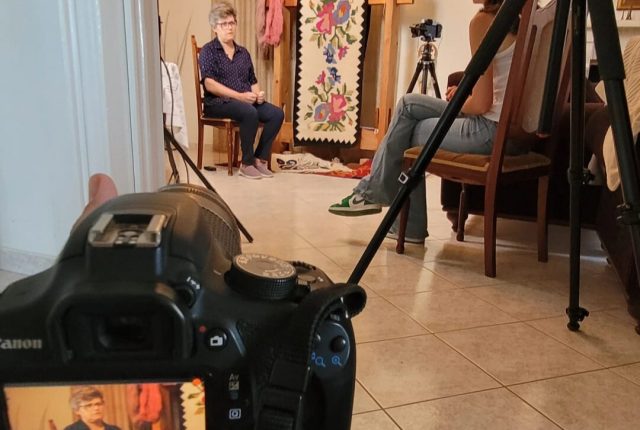
Crafts passed down through generations in rural villages are a living testament to Greece’s rich cultural heritage. In our quest to safeguard these traditions, we are exploring the enchanting Laconian village of Geraki.
Located in the southeastern part of the Peloponnese peninsula, within the rolling hills of Mount Parnon, Geraki holds a special place in the tapestry of Greek culture.

Our journey led us to this village, where we immersed ourselves in the time-honored art of weaving. Through this age-old craft, the female weavers of Geraki not only create beautiful textiles but also preserve a unique tradition that holds deep cultural value. Each piece is imbued with the essence of the village, capturing the spirit of generations past and present.
Throughout the day, we engaged in various activities, such as cataloguing kilims, gathering information from chatting with weavers, and gaining a deeper understanding of the village’s inspirations. These tasks allowed us to unravel the intricate threads that bind Geraki’s weaving traditions to its vibrant community.

For instance, while learning more about a kilim that was dyed in deep black hues and adorned with vibrant flowers, a weaver unveiled that this kilim was created during the darker days of World War II. The skilled hands of the weaver used the language of colors to convey a poignant message—dark dyes symbolized hardship and resilience, while bright colors represented hope and brighter days. This significant insight will be recorded for archival purposes, ensuring the preservation of this artifact for future generations.
Join us as we continue our exploration in Geraki, celebrating the artisans and their artistry. Through our documentation, we aim to foster an appreciation for the intricate beauty and cultural significance of Geraki’s weaving traditions for present and future generations.
